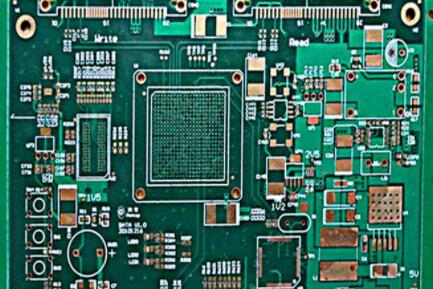At present, the varieties and specifications of the components used for PCBA processing surface mounting are not complete, so when surface assembly, through-hole insertion components are sometimes still needed. For more complex integrated circuit boards, it is generally called the "hybrid surface mount" method. The surface mount production process is divided into three types:
PCBA processing single-sided mixed assembly
All components, including surface mount parts and plug-in parts, are on a single side of the PCB board. We use solder paste printing, component placement and reflow soldering to complete the surface mounting process; further, we use manual insertion or white motion insertion methods to fix the inserts, and then enter wave soldering to weld the through-hole inserts. This single-sided printed circuit board is a more common design. But there is no doubt that it limits the capacity and mounting density of the PCB board. This kind of process arrangement (the two processes of surface mounting and through-hole insertion are relatively independent) are easier to achieve quality requirements, and are suitable for production modes with relatively large degrees of freedom.
PCBA single-sided hybrid assembly process
PCBA processing double-sided surface assembly
The process of double-sided SMT all uses surface-mounted components, and the corresponding double-sided reflow soldering is used. It is worth emphasizing that, considering that during the second reflow soldering, the components on the reverse side may slip off due to the temperature reaching the melting point. Generally, the adhesive should be added for larger components. Therefore, the selection of the dispenser has a great influence on the effect of the process. Of course, this is related to the distribution of the reflow soldering thermal domain and the change of the thermal temperature curve. On the one hand, it is the melting point of the tin-lead alloy, and on the other hand, it is the analysis of thermal stress. Therefore, the temperature setting of reflow soldering and the selection of conveyor speed are very important.
PCBA processing double-sided surface assembly

PCBA processing double-sided hybrid assembly
With the development of large-scale integrated circuits, printed circuit board mounting technology has become more and more complex. Often when designing computer and workstation motherboards, a variety of ASICs and interface components are used in a comprehensive manner. The components are installed on both sides of the PCB., The circuit board may have several intermediate layers. The application of large-scale integrated circuit VLSI puts forward higher requirements for placement machines and soldering technology. The position standard of accuracy of 1mil can be achieved on advanced placement machines. The latest VL5I has a pin spacing of 12 mils. During the surface mounting process, the volume and printed shape of the solder paste become important. Similarly, surface mounting like BGA spherical grid arrays makes the entire process more and more complex.
PCBA processing double-sided hybrid assembly
On the surface, the double-sided hybrid assembly consists of three steps: front mounting soldering, bottom mounting soldering, and plug-in wave soldering. But these three are not isolated, they will have an impact on each other.